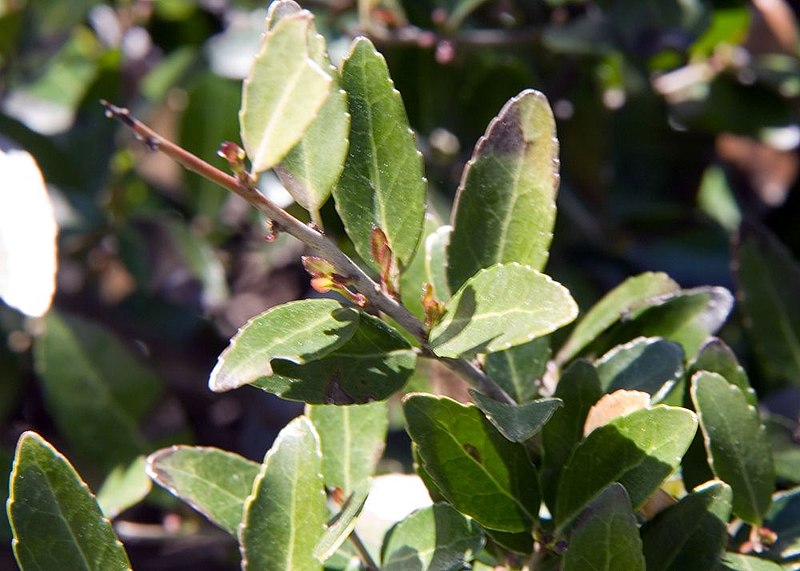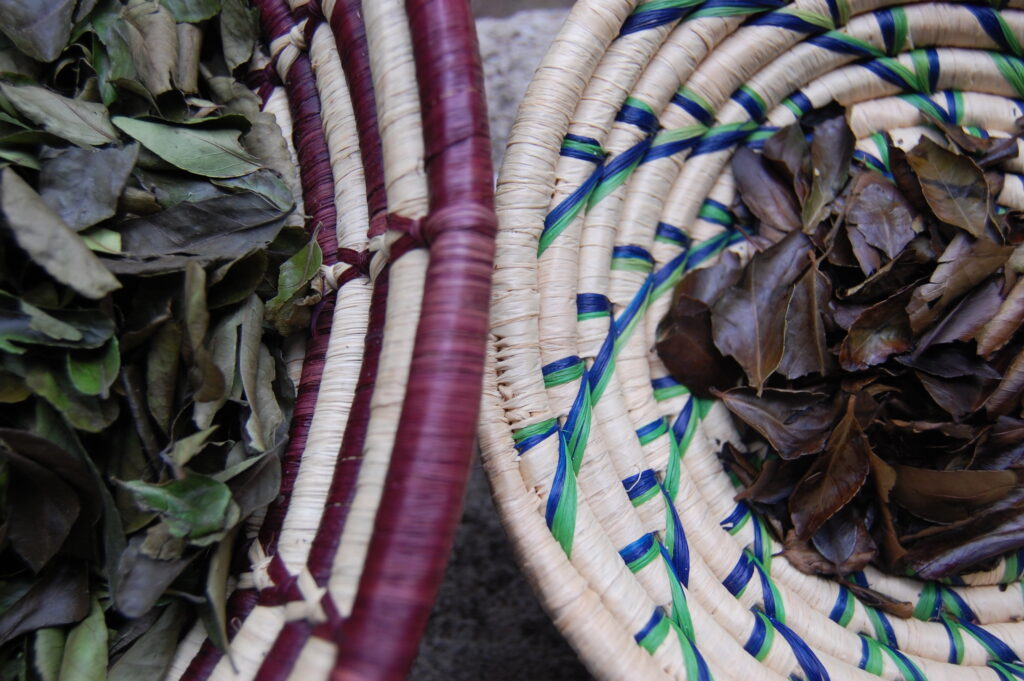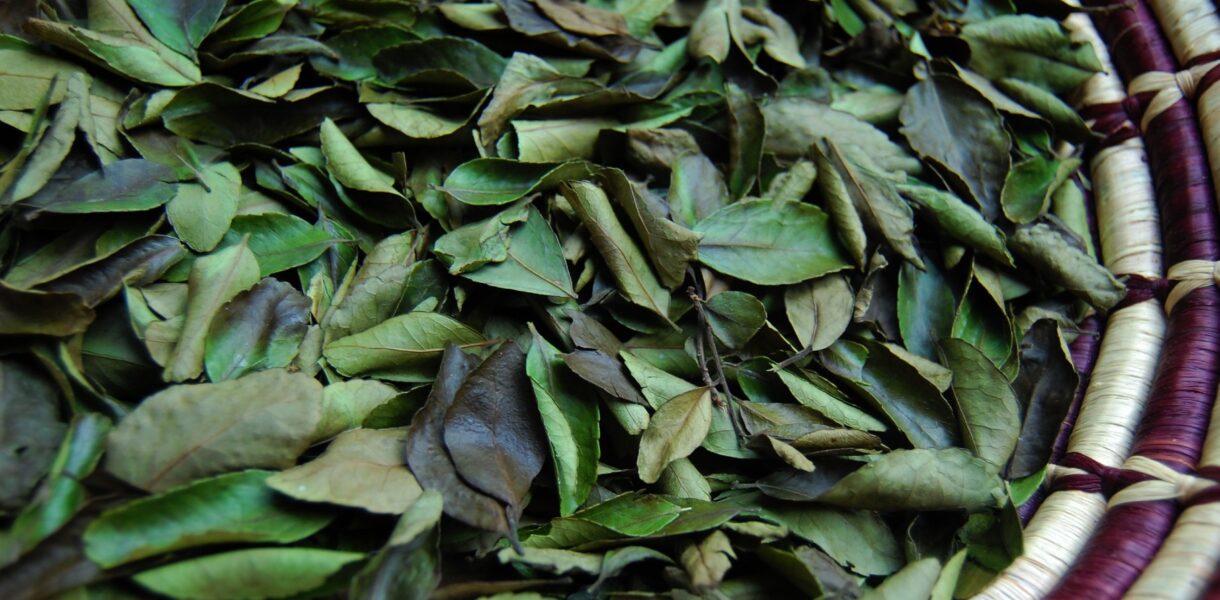Yaupon Holly Tea- A Native Coffee Alternative
Roughly 85% of Americans drink at least one caffeinated beverage per day, most of which are derived from two plants (the tea camelia and the coffee plant) originating in Asia and Africa. But did you know we have our own caffeinated plant that makes a delicious energizing beverage? Yaupon holly (ilex vomitoria) is the only plant native to the United States that produces substantial amounts of caffeine. The leaves of Yaupon holly contain about 0.7 percent caffeine by weight, compared to coffee beans which are 1.1 percent caffeine by weight. But it has more going for it than caffeine content- Yaupon tea also contains many antioxidants, just like its botanical cousin Yerba Mate.
Its native range covers most of the Southeastern United States and today it can be found in residential areas as an ornamental shrub, often trimmed into hedges or topiaries. Yaupon is of particular value in coastal landscaping due to its high tolerance for sandy soil and salty air, which is why we always keep an eye out for it when we are on vacation at the North Carolina beach with my family. Though relatively unknown for its edibility now, consuming Yaupon holly has a long history. According to the Smithsonian, Yaupon tea was once consumed by every Native American tribe that lived in its territory, including the Creek, Choctaw, and Appalachee (we want to note that we are using the past tense to denote rituals that are believed to have disappeared after the forced removal and genocide of indigenous american groups, not to refer to the people themselves). While many drank it daily for energy and mental clarity, there are also records of its use in spiritual ceremonies. Its name, vomitoria, is derived from these rituals that allegedly involved purging the participants’ stomachs, but there is no scientific evidence to suggest that the leaves actually have emetic properties, so ethnobotanists speculate that other herbs must have been added to the ritual drink or it must have been consumed in very large quantities during these rituals to have that effect.

This drink, known by many names throughout America and Europe (Cassina, Apalachine, Carolina tea, and just “black drink,” to name a few) was so popular by the late 18th century that it threatened the interests of Britain’s powerful tea merchant, the East India Company. As a result England limited its importation, making it much harder to get throughout Europe. Some even believe that English botanist William Aiton gave the plant its scientific name (ilex vomitoria) not solely because of the ritual cleansing ceremonies associated with it but as a smear to damage its reputation. As its use waned in Europe, the tea also fell out of fashion in America due to its association with poor settlers and the removal and genocide of the indigenous groups who used it. After falling into obscurity for over 100 years, Yaupon tea is only now beginning to re-emerge as small farms and startups have seized upon it, eager to market a native plant to the millions of Americans who drink caffeinated beverages everyday.
According to historical literature, Native American tribes who harvested the holly leaves dried and roasted them and stored them in baskets for later use or for trade. To make the beverage, they would boil the leaves in water and agitate the mixture to make it frothy. Sounds better than Starbucks to me! To harvest Yaupon tea quickly, we look for a stand of large, healthy shrubs and grasp the stems firmly between our fingers, moving them up to the tip of the branch to strip the leaves off as we go. To dry, you can use a dehydrator set at 170-200 degrees Fahrenheit or an oven on the lowest setting. If you are in a hot and dry climate, you can also spread them in a thin layer on a baking sheet and they will dry quite quickly (just make sure they are protected from strong winds as they will be much lighter when dry and prone to blowing away!).
Most of the tribes that consumed Yaupon holly roasted them until they turned from their natural bright green color to a deep brown. This leads to a richer, smokier taste, with a flavor profile close to Yerba Mate. If left green, the steeped tea tastes very similar to green tea. We have found that Yaupon tea is not picky in terms of how it’s brewed (although I’m sure if it ever surges in popularity there will be plenty of Yaupon connoisseurs who emerge to tell us we’re not doing it properly). Just load up a french press or tea pot with about 1tsp of dried leaves per cup of water and cover with boiling water. Let steep for 5-10 minutes depending on how strong you like your brew and enjoy! You can re-steep the leaves a few times and still get a flavorful drink, but most of the caffeine will have been extracted from the first steeping.

When we are doing our living-off-the-land challenge, Jordan switches to Yaupon tea instead of coffee and has found it does a great job of keeping him alert throughout the day. I am very sensitive to caffeine and rarely drink it, but I have had this on a few occasions and found that it provided a much less jittery energy-boost than coffee or black tea. If you have prepared Yaupon holly tea, let us know your favorite method and if you liked it! We look forward to continuing to explore the uses for this beautiful and resilient native plant.
